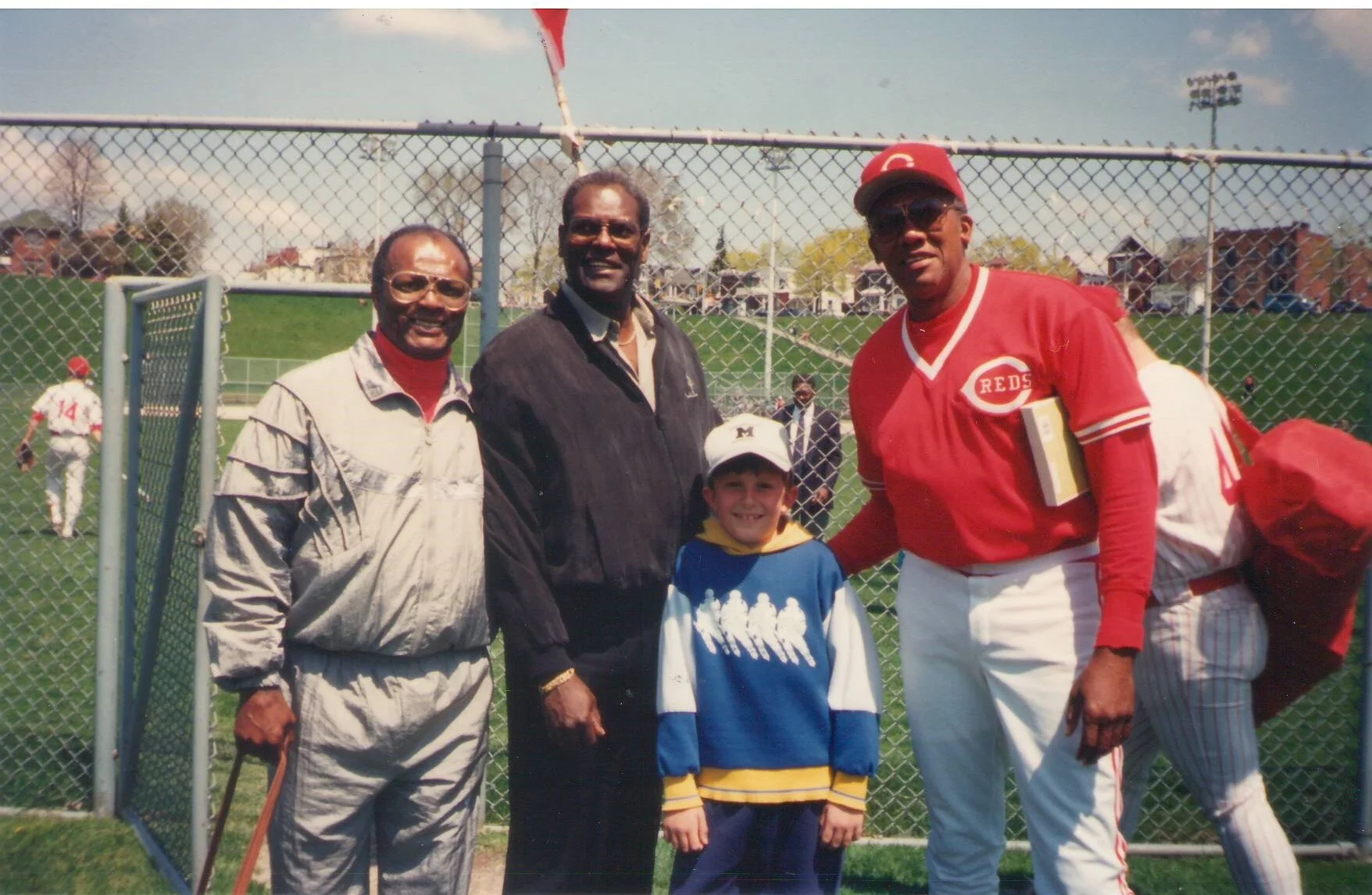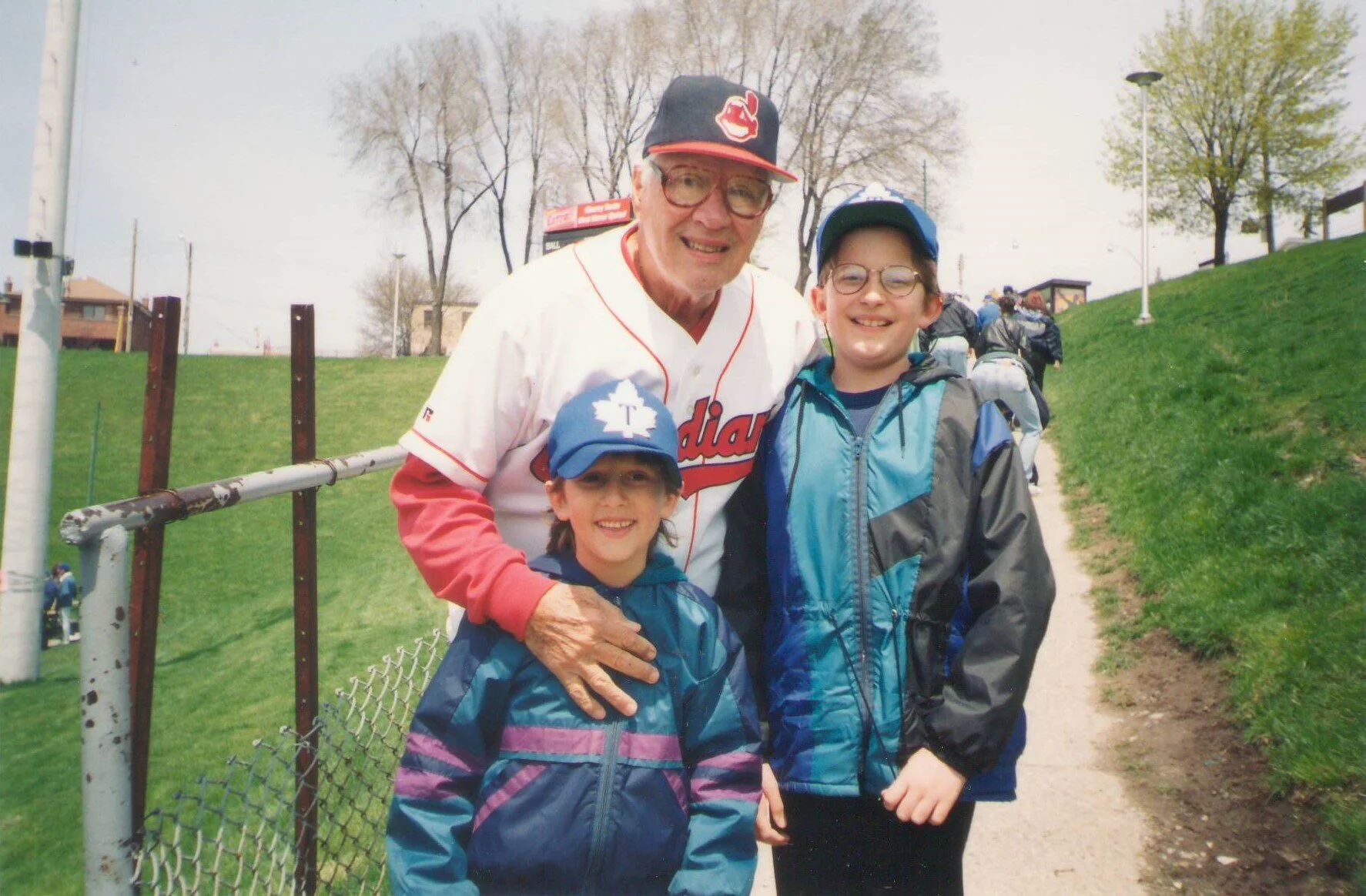Antonacci: Memories of meeting Bob Gibson at Toronto's Christie Pits
The author at nine years old, flanked by Curt Flood, Bob Gibson and Ferguson Jenkins at a Toronto Maple Leafs Intercounty game at Christie Pits in May 1994. Photo supplied.
October 6, 2020
By J.P. Antonacci
Canadian Baseball Network
Bob Gibson was giving me grief. And I deserved it.
“Don’t you like baseball?” he said, the two of us standing near the fence at Toronto’s Christie Pits.
“Yes,” I squeaked, craning my nine-year-old neck to meet the glare that had intimidated so many sluggers.
“Then why are you wearing a hockey shirt?” Gibson said, rapping my Martingrove Baseball cap with his long fingers and then poking at my hoodie, which did indeed have the silhouette of four hockey players skating across it (a poor fashion choice in a childhood full of them).
I don’t remember what feeble reply I made to his unassailable point, but we’re both smiling in a photo my dad took of me leaning into Mr. Gibson’s stomach, the two of us flanked by Curt Flood and Ferguson Jenkins.
It’s a treasured memento from the annual Mother’s Day game at Christie Pits, when Toronto Maple Leafs owners Jack and Lynne Dominico conjured up a different class of hall of famers every year to give Intercounty fans a brush with greatness.
As an avid reader of baseball history, I knew these men and their stories. How Gibson was so good they had to lower the mound to give the hitters a chance, and so tough that no one dared lean over the plate when he was on the hill. That Jenkins was a fellow Canadian who ended up in Cooperstown on the strength of over 3,000 strikeouts. How Bob Feller’s fastball once outraced a speeding motorcycle. And while my elementary school curriculum hadn’t quite made it to labour relations, I understood that Flood had shown great fortitude in challenging the reserve clause and paving the way for free agency.
Bob Feller took the time to pose for a picture and offer pitching tips to brothers Matt and J.P. Antonacci at the 1996 Toronto Maple Leafs Mother’s Day game. Photo supplied.
To carefully descend the grassy hill and meet these baseball legends was an annual thrill. Feller held court in the bleachers, staying for the game and chatting with the fans. He told us that he built up his strength as a teen by baling hay, and that his power came from his legs.
I asked him if he jogged a lot.
“Jogging’s for old men,” he snorted.
Wind sprints, he said, were the way to go. Run as fast as you could for as long as you could, walk a spell, then do it again. As a young pitcher looking to coax a bit more speed out of my fastball, I hung on every word.
The author very subtly poses for a photo while Ferguson Jenkins signs autographs at Christie Pits. Photo supplied.
Rollie Fingers was less illuminating. I was excited to ask one of the best relievers of all time, his moustache less extravagant but still very much there, for his secrets to success.
“Throw strikes,” he said, ending the conversation.
The Leafs printed commemorative programs that made for perfect autograph books, which is how I ended up with signatures from Jimmy Piersall (ran the bases backwards after a home run), Enos Slaughter (he of the Game 7 Mad Dash to beat Boston), underrated sluggers Dick Allen and Tony Oliva, and trailblazing outfielder Larry Doby, whose bravery in integrating the American League three months after Jackie Robinson broke the colour barrier I was only beginning to appreciate.
It was as though my books about baseball’s Golden Age had come to life in front of my eyes. I asked Gibson to sign my copy of his autobiography, From Ghetto to Glory, and Feller was delighted to flip through a copy of his memoir, Now Pitching, Bob Feller, which he hadn’t seen in a while.
Rapid Robert also graciously signed an 8x10 photo depicting his famous high leg kick, his inscription wishing me good luck with my pitching. I had it framed and displayed on my bookshelf for years. I also added sprints to my training regimen, though my fastball never got close to the Heater from Van Meter.
Bob Gibson’s passing, like Lou Brock’s before him, severs another living link to that golden era. Perhaps those years glow brightest in the minds of those who weren’t actually there – of people like me who learned about them through lyrically penned game reports and dramatic black and white photographs, my imagination filling in the rest.
But when I met these men, these giants of the sport, in living colour, they were as gracious as can be, taking time to humour a child’s questions and letting me linger within earshot as they swapped stories about the game we all loved.



